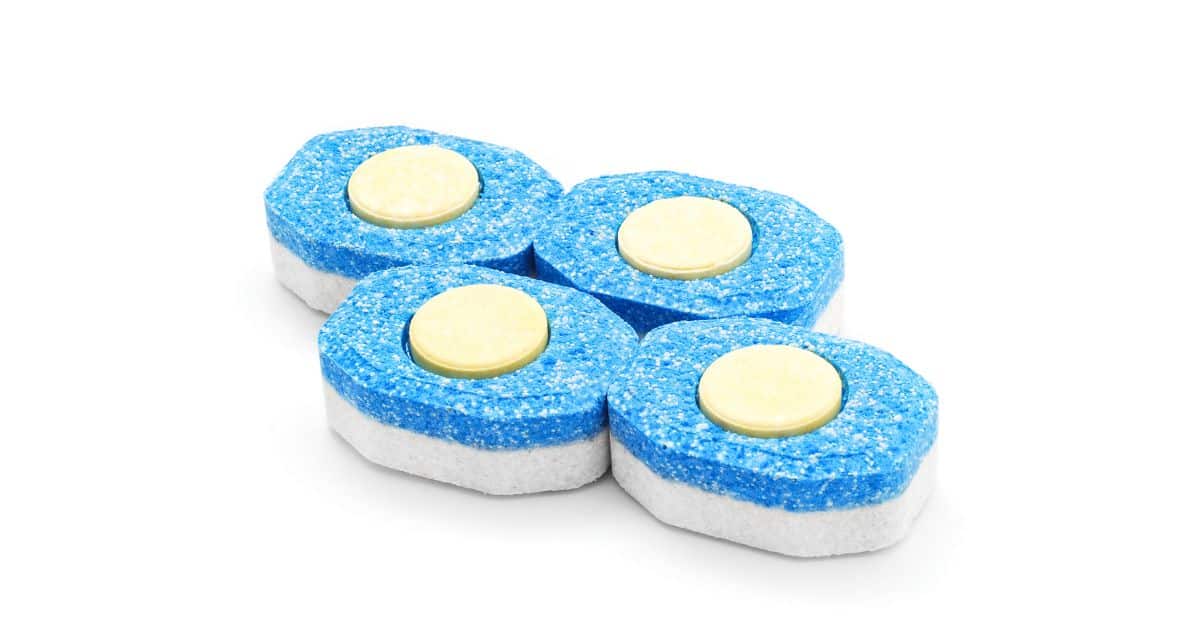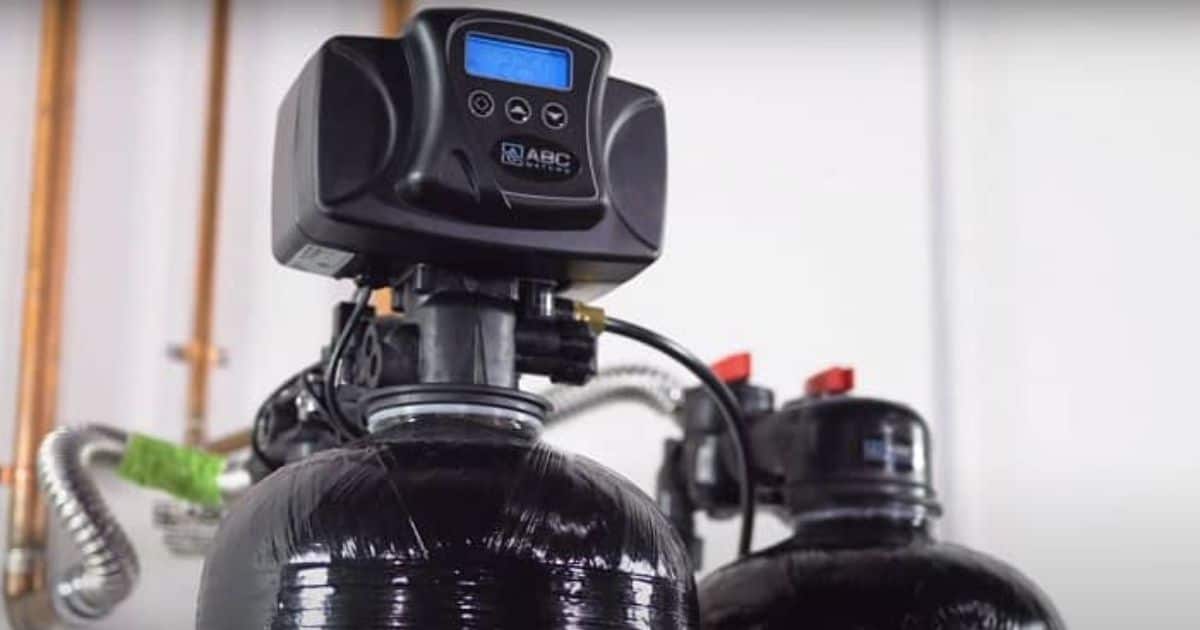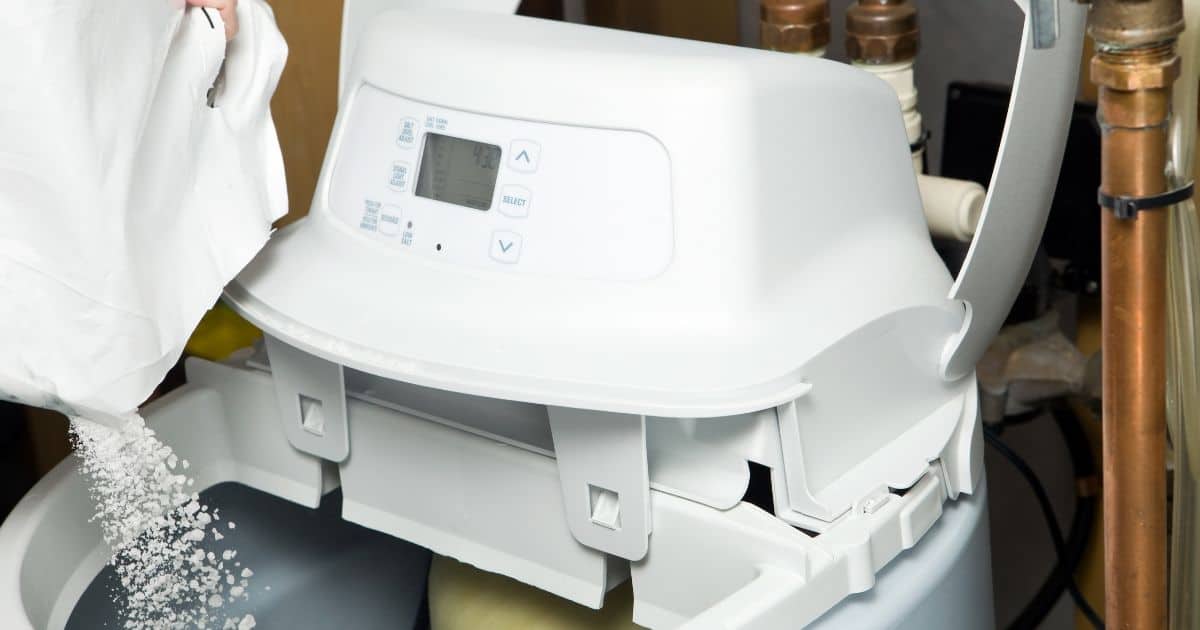We like to share product recommendations with you and hope you like them! Just to make you aware Water Filter Data may collect a small share of sales or other compensation from the links on this page.
The benefits of soft water range from softer skin to better upkeep of your plumbing system. When hard water starts causing a menace, we often resort to water softeners to overcome the issue.
Water softeners are available in two varieties: the upflow system, where water flows upwards, and the downflow system, where, as the name suggests, the water flow is directed downwards.
In this article, we will cover the differences between upflow vs downflow water softener systems, their pros and cons, and which is best for your needs.
Let’s find out.
Types of Water Softeners

Upflow water softeners
In an upflow water system, once the water flows across the upper basket, it travels down a riser tube in the center of the tank. From the bottom of the riser tube, the water flows through the lower basket.
From there, the water is sucked upwards through the filter in a swirl. The rounded bottom of the tank causes the downward water flow to get directed in an upwards direction. Therefore, it’s known as the upflow water softener.
This upwards water flow propels a “powerful lifting” impact that spreads the resins, causing the brine solution to be evenly spread into the resin beds. It then flows through the base of the control valve, before finally draining. Most upflow systems flush the stagnant water, which prevents bacterial growth or contamination in the soft water.
Downflow water softeners
In contrast, downward water systems are simple in their mechanism. From the upper basket, water flows into the tank, flowing down the filter and into the bottom basket. Next, the filtered water is directed back up the riser tube and then out of the tank.
While the downflow and upflow systems look and function identically, the difference lies in the regeneration. In the downflow system, the brine water rushes down from the top of the tank.
In this water softening system, only two-thirds of the bottom of the tank houses the resin. Here the brine is first diluted before reaching the resin, making it less effective by the time it enters the resin tank. This process further pushes the resin beads against the base of the water softener tank, so salt does not get evenly distributed in the resin bed.
In the downflow softener, the water flows down from the upper basket, through the resin and ending up in a lower basket. The soft water exits the tank from the riser tube.
Key Differences Between Upflow vs Downflow Water Softener

1. The direction of water flow
In both ion exchange water systems, a filter is used to replace the water’s mineral content with salt to convert hard water to soft water. The sodium ions replace equal amounts of magnesium and calcium hardness ions to soften the water. The main difference in these systems is how the brine flows into the resin or mineral tank.
In an upflow water softener system, the brine water travels upwards to the crown of the tank. However, in downflow water softening systems, the brine water flows naturally downwards to the base of the tank in the same direction as the service flow.
2. The efficiency of regeneration
The upflow regeneration process leads to money and salt savings. When recharging resin with salt, the upflow water softener is considered 5% more efficient than a downflow water softener.
3. Better brine function
The brine is more effectively distributed in an upflow system for creating soft water than in a downflow system. In an upwards softener, there is no fear of the filter becoming compact. However, in the case of a downflow water system, the salt consumption is higher, and the filter media can become quickly compact due to the downward flow of water.
4. Cost
The cost of an upflow water softener ranges from $700 to $2000. Though the buying cost is higher than that of a downflow water softener, in the long run, upflow water softeners are most affordable to maintain and provide a better return on investment.
The cost of downflow water softeners can vary from $600 to over $1500. Apart from the downflow system’s installation rates, the other costs of energy, water, and salt, are higher.
5. Lifespan
Both systems enjoy a good lifespan ranging from 10 to 20 years. The lifespan depends on several factors, namely, the quality of the parts and the percentage of resin crosslink. The resin material tends to have a longer lifespan in a more durable and structured upflow water softener.
Benefits of an Upflow Water Softener

The upflow system is a high-efficiency water softener, as it scores better than downflow systems on several parameters.
1. Energy efficient
The upflow water softener is more energy efficient and has a 10% greater capacity. This system saves water, energy, and salt dose, and is cost-efficient in the long run.
2. No backwashing required
In upflow models, no backwashing is needed. Each time the water flows in an upward motion, the filter is continuously fluffed. Channeling, or low flow rate, does not pose an issue with upflow water.
3. Salt conversion is higher
As the water filter swirls in an upflow system, the untreated water is in contact with the filter media for a longer time. The greater contact time leads to lesser ion leakage, better salt conversion, and lower fluoride discharge.
The leakage in an upflow water system is just 1/10 the amount in a downflow system. Also, there is no hardness leakage in upflow systems, enabling it to use low salt doses.
4. Reduced brine usage efficiency
In an upflow water system, the brine solution usage is 15-30% less than compared to the downflow system for the same amount of water consumption. When the brine solution is flowing upward through the salt tank, it is potent and most effective. It comes in contact with the resin first.
At this point, the water is also flowing up through the tank, creating a “lifting” effect. This spreads the resin out efficiently, enabling the salt to flow throughout the resin evenly and completely. So, even with low salt content, we get the same quality water.
In a downflow water softener system, the brine gets diluted as it reaches the top of the tank, becoming weaker and less effective. Meanwhile, the resin bed becomes compact into the bottom of the tank, making the free flow of the brine solution difficult throughout the resin bed.
5. Low electric costs
Most upflow systems do not need electricity to generate soft water. Also, these systems do not employ drainage pipelines.
Downsides of an Upflow Water Softener
Some cons of installing an upflow water softening system include:
1. Complex design
The upflow design has a complicated system in which mammoth engineering is required for the regeneration cycles. In case of an issue, it is more tedious to repair an upflow water system than a downflow water softener. In some cases, the upflow mechanism can “stick” the valve head since it’s flowing up rather than down and out the drain during the brine rinse.
2. Time-consuming process
In an upflow water softener, the water contact time with the resin tank is longer to remove the water’s hardness completely. So, as compared to a downflow water softener, the upflow regeneration takes longer.
3. Higher pricing
Due to the technology and efficiency involved, an upflow softener will be a little more expensive on the pocket.
Benefits of a Downflow Water Softener
1. Simple design
The downflow system has a relatively simple design, the liquid engineering is easy to configure, and even replacing the parts is a simple task when compared to an upflow design.
2. Affordable
A downflow system is much more cost-effective in comparison to an upflow unit.
3. Necessary in a few cases
In cases where oxidized iron needs to be flushed out from your water, a downflow softener could be your best bet.
4. Less likelihood of plugging
The injector nozzle is bigger in a downflow softener, so the nozzle is more likely to get plugged up in a smaller upflow softener nozzle.
Downsides of a Downflow Water Softener
1. Not environmentally-friendly
Downflow softeners end up leaking salt down the drain, leading to a lot of wastage. This chloride discharge can hurt the environment. The salt usage has to be increased with a downflow system, and many downflow water softeners employ up to 900 pounds of salt to remove heavy metals and other contaminants from areas where water hardness levels are higher.
2. Backwashing needed
In a downflow water system, the resin bed becomes more compact over time. As a result, the resin bed does not get fully utilized and backwashing is needed. Also, despite backwashing, channeling could occur, causing tunnels in the filter device that weaken the filtration mechanism and flow rate needed to soften the water.
Upflow vs Downflow Water Softener: The Final Verdict
As discussed above, upflow water softeners tend to be more beneficial, though the upfront cost could be a concern. Upflow water softeners utilize lower quantities of water and salt. Also, they are more efficient in removing materials and excess minerals that harden water than the downflow models.
We hope this article cleared up the main differences between upflow vs downflow water softener systems. Choose your filtration unit wisely.

Ph.D. graduate working as a water quality consultant for many government agencies helping them find solutions to the ever-growing problem of polluted water. Loves a good coffee!



